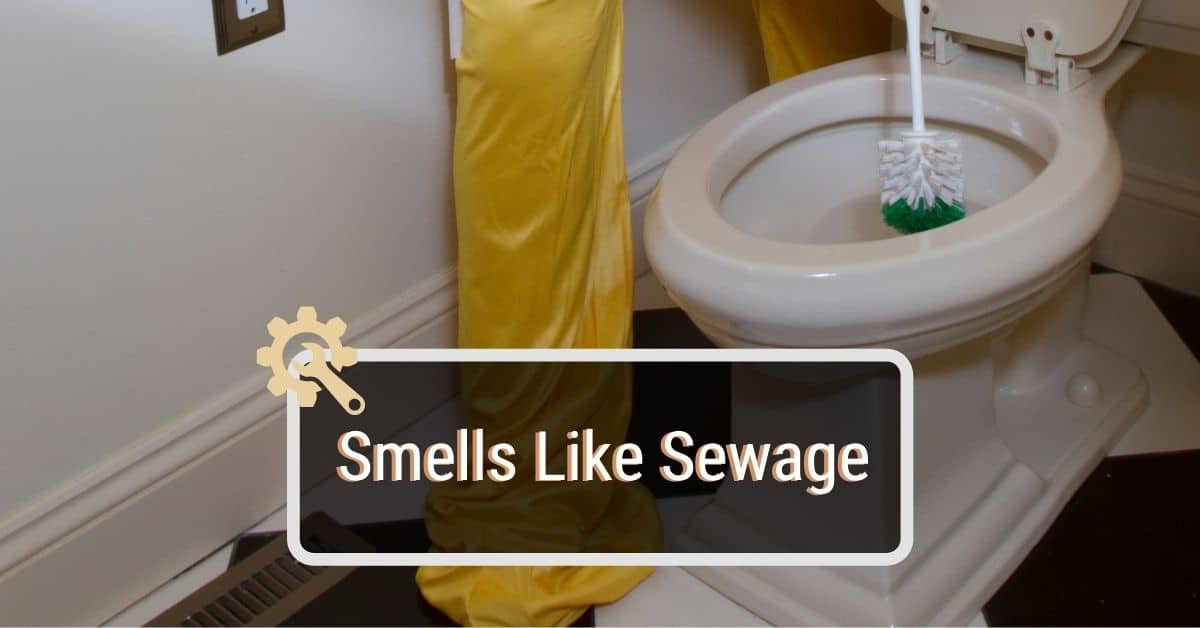Potential Causes of Sewage Smell

Sewage smell from bathroom sink – The foul odor emanating from your bathroom sink can be traced back to a multitude of potential culprits, each with its unique mechanism contributing to the unpleasant aroma.
The pungent stench of sewage seeping from the bathroom sink can be an unwelcome assault on the senses. While the source of the odor may lie deep within the plumbing system, a simple solution could be as close as your bathroom vanity.
White bathroom sink faucets , with their sleek and modern design, not only enhance the aesthetics of your bathroom but also provide a functional upgrade. By replacing your old faucet with a white one, you may find that the sewage smell from the sink diminishes, leaving your bathroom refreshed and inviting.
One common cause is a faulty P-trap, the U-shaped pipe beneath the sink that serves as a barrier against sewer gases. When this trap becomes clogged or damaged, it can no longer effectively block the passage of these noxious odors, allowing them to permeate the bathroom.
The stench of sewage permeating from the bathroom sink is an unpleasant experience. One possible cause is a faulty seal around the drain, which can allow sewer gases to escape. To address this issue, consider installing a new 30 inch bathroom vanity and sink combo , which often includes a pre-sealed drain.
Additionally, check the P-trap beneath the sink to ensure it is filled with water, creating a barrier against sewer gases.
Clogged Drains, Sewage smell from bathroom sink
Another potential source of the sewage smell is clogged drains. When hair, soap scum, or other debris accumulates in the drainpipes, it can create a blockage that prevents water from flowing freely. This stagnant water provides an ideal breeding ground for bacteria, which decompose organic matter and release foul-smelling gases.
Dry Vents
Finally, dry vents, which are pipes that extend from the drainpipes to the roof, can also contribute to sewage odors. These vents are designed to allow air to circulate through the plumbing system, preventing the buildup of sewer gases. However, if the vents become clogged or disconnected, they can no longer perform their intended function, leading to the accumulation of odors in the bathroom.
Inspection and Diagnosis

To pinpoint the source of the sewage smell, a thorough inspection of the bathroom sink is essential. This involves checking the P-trap, cleaning the drain, and examining the vent.
Checking the P-Trap
The P-trap is a U-shaped pipe beneath the sink that prevents sewer gases from entering the bathroom. Check for any leaks or clogs by looking for water or debris accumulation. If the P-trap is clogged, remove the blockage and tighten any loose connections.
Cleaning the Drain
Clogged drains can trap organic matter and cause sewage odors. Use a drain cleaner or baking soda and vinegar to dissolve buildup. Pour the solution down the drain and let it sit for a few minutes before flushing with hot water.
Examining the Vent
The vent pipe allows sewer gases to escape from the plumbing system. Check the vent pipe on the roof for any blockages or damage. If the vent is blocked, sewer gases may back up into the bathroom sink, causing the smell.
Remediation Strategies: Sewage Smell From Bathroom Sink

Eliminating sewage odors from a bathroom sink requires a multi-pronged approach. This involves identifying the source of the odor and implementing appropriate remediation strategies. Common methods include unclogging drains, replacing P-traps, and ensuring proper sink ventilation.
Unclogging Drains
Clogged drains are a major cause of sewage odors. Hair, soap scum, and other debris can accumulate in the drainpipe, creating a blockage that traps water and allows sewage gases to escape. To unclog a drain, you will need a drain snake or auger, a pair of rubber gloves, and a bucket.
- Put on rubber gloves to protect your hands.
- Insert the drain snake or auger into the drain opening and push it down until it reaches the clog.
- Turn the handle of the drain snake or auger to break up the clog.
- Pull the drain snake or auger out of the drain and flush the drain with hot water to remove any remaining debris.
Replacing P-Traps
The P-trap is a U-shaped pipe that connects the sink drain to the main drainpipe. It is designed to trap water and prevent sewage gases from escaping into the bathroom. Over time, the P-trap can become clogged or damaged, allowing sewage odors to leak out.
To replace a P-trap, you will need a new P-trap, a wrench, and a bucket.
- Place a bucket under the P-trap to catch any water that may leak out.
- Use a wrench to loosen the nuts that hold the P-trap in place.
- Remove the old P-trap and replace it with the new one.
- Tighten the nuts to secure the new P-trap in place.
- Flush the sink with hot water to test the new P-trap.
Venting the Sink Properly
Proper ventilation is essential for preventing sewage odors from escaping into the bathroom. The sink drainpipe should be connected to a vent pipe that allows sewage gases to escape to the outside of the house. If the vent pipe is blocked or damaged, sewage gases can build up in the drainpipe and escape through the sink.
To vent the sink properly, you may need to clean the vent pipe, replace the vent cap, or install a new vent pipe.
- Inspect the vent pipe for any blockages, such as leaves or debris.
- If the vent pipe is blocked, use a drain snake or auger to clear the blockage.
- If the vent cap is missing or damaged, replace it with a new one.
- If the vent pipe is not connected to the sink drainpipe, install a new vent pipe.